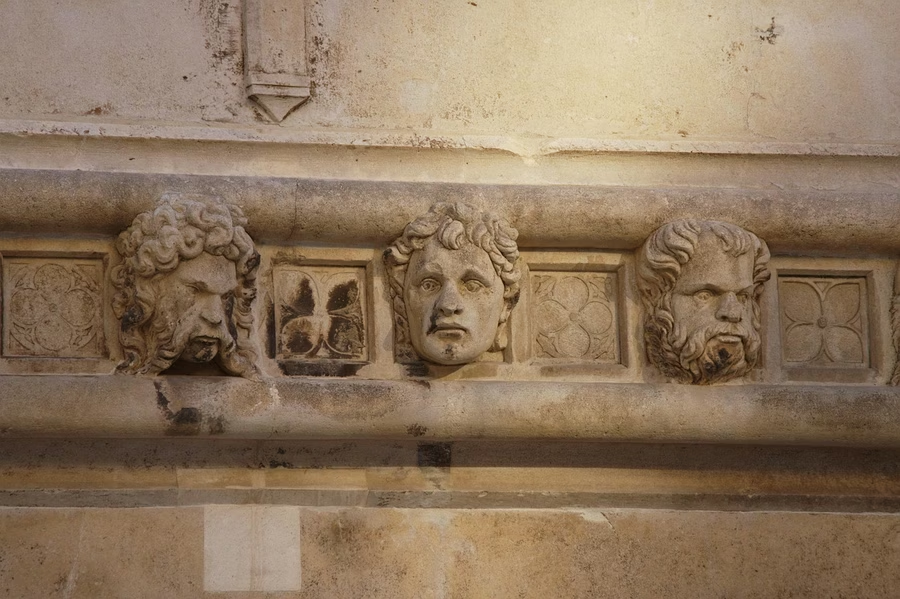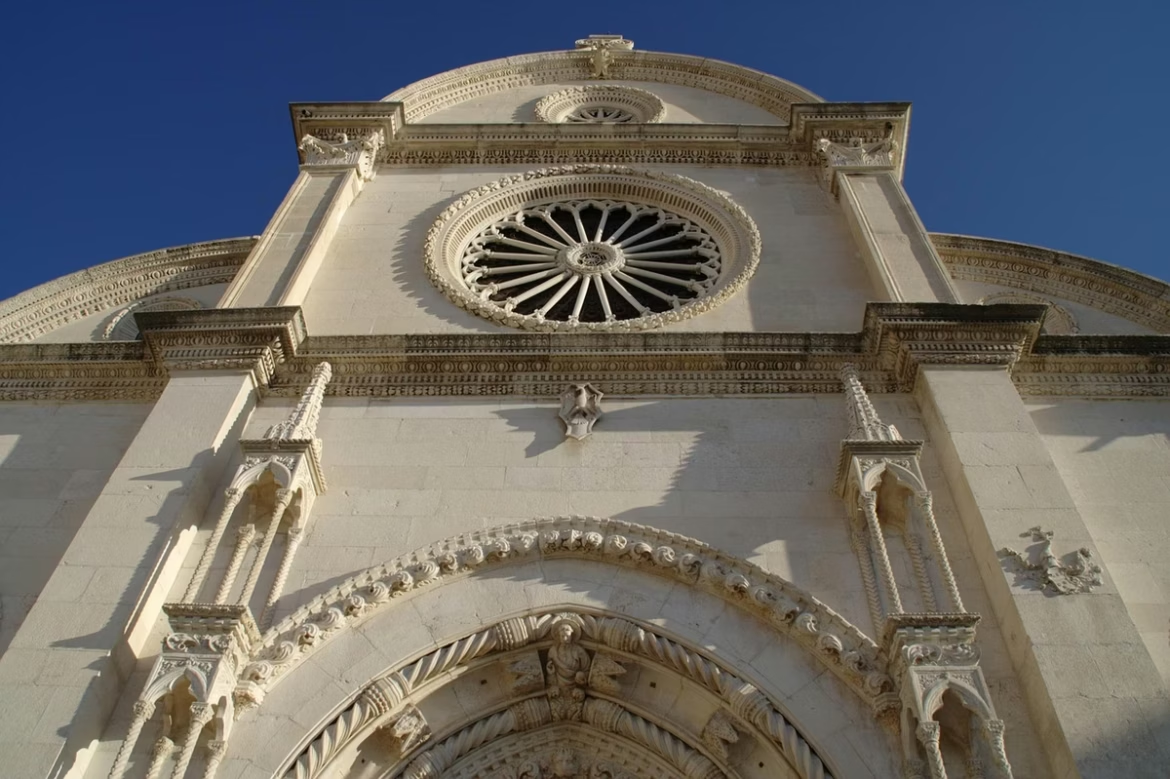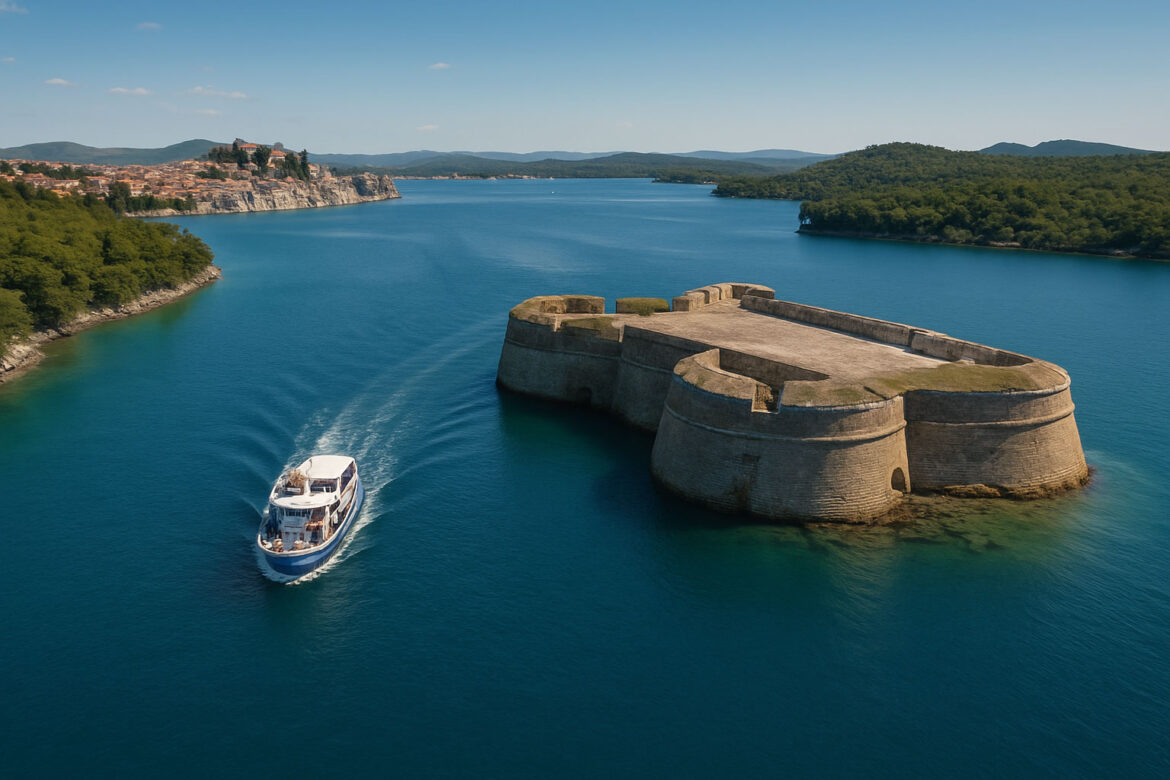Nowhere else will you see something like this. The Cathedral of St. James in Šibenik is a blend of architectural genius and a gallery of 71 stone-carved heads.
Krešimir’s city, as Šibenik is also called, was the first city in the world with alternating current and the first city in Croatia to have public lighting – thanks to the hydroelectric power plant built on the Krka River in 1895. Šibenik is also one of the oldest towns on the Croatian coast, the birthplace of the great Dražen Petrović, a city of sports, fortresses, and culture. For centuries, however, it has also been home to the Cathedral of St. James, admired not only for its harmony and grandeur but also for its unique construction technique unmatched in all of Europe. This stone masterpiece is a monument to human creativity and perseverance, a symbol of Šibenik, and a place worth experiencing at least once in a lifetime, writes Putni kofer.
UNESCO World Heritage
The Cathedral of St. James stands out among European sacral buildings because it was built entirely of stone – without the use of binding materials such as mortar, and without wooden structures. Instead, master builder Juraj Dalmatinac designed an innovative system in which carefully crafted stone blocks were laid and joined together like a giant puzzle. This method, unique in European architectural tradition, places the Šibenik cathedral among the true wonders of world architecture.
Due to its exceptional value, the cathedral was inscribed on the UNESCO World Heritage List in 2000. In UNESCO’s explanation, the uniqueness of its construction is particularly emphasized, as well as the fact that the entire building – including the dome and vaults – was made exclusively of stone. According to UNESCO, this is a unique example in Europe and an important testament to the exchange of cultural and architectural influences between northern Italy, Dalmatia, and Tuscany in the 15th and 16th centuries.
Two Masters – Juraj Dalmatinac and Nikola Firentinac
Construction of the cathedral began in 1431 and lasted for more than a century. Its first chief builder was Juraj Dalmatinac, one of the most important architects and sculptors of the late Gothic and early Renaissance in Dalmatia. His work was marked by innovation – from the construction technique without binding material to sculptural details such as the famous gallery of 71 human heads on the exterior wall of the apse. After his death, the work was continued by Nikola Firentinac, who added Renaissance elements and completed the project into a unique whole.
71 Carved Heads as a Symbol
On the outer walls and facades of the cathedral lies a series of 71 carved human heads, which for centuries have aroused admiration and curiosity. Their origin and meaning have never been fully clarified, but historians assume that Juraj Dalmatinac immortalized real people he encountered during his stay in Šibenik.

Pixabay
The faces are diverse – from serious and dignified to slightly grotesque and caricature-like – suggesting that the author wanted to depict the variety of society at that time, from respected citizens and merchants to ordinary townspeople, and perhaps even his own acquaintances.
In addition to being an unrepeatable architectural masterpiece, the Cathedral of St. James also holds a strong symbolic role. Its dome, dominating the city’s panorama, served for centuries as a landmark for sailors and as a symbol of Šibenik’s strength and identity. Today, it is not only an unmissable site for visitors but also a vibrant gathering place for the local community.
Source: N1 Info


